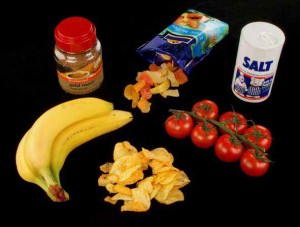Published on August 16th, 2015 | by Michaelw
How to manage potassium levels in kidney disease
Potassium – What is it?

Potassium is essential for keeping pH level as well as fluid and electrolyte stability. It essentially controls the function of muscle and nerve, including the heart.
For these reasons, In people with chronic kidney disease, too high or too low level of potassium can be very dangerous.
Potassium arrives via the meals we consume, healthy kidneys get rid of unnecessary potassium via the urine to sustain regular levels within the blood.
But if you have chronic kidney disease you kidneys are not healthy, the levels of potassium can arise in the blood.
In fact, one of the purposes of kidney dialysis is to get rid of potassium in the blood.
During my journey to get out of kidney dialysis managing potassium was one of the first things I had to learn.
Excess of potassium: why is it dangerous in chronic kidney disease
Hyperkalemia* (high potassium in the blood) often occurs in people with kidney disease, especially in end stage renal disease.
Potassium levels must be monitored especially in patients who get intermittent hemodialysis, as the levels of potassium can rise when not in dialysis.
The risk is lesser if you do daily home hemodialysis or peritoneal dialysis.
Hyperkalemia will probably happen any time dialysis treatments are skipped or reduced or if large amounts of meals high in potassium are eaten and can result in abnormal heartbeats and even in the heart stop beating.
Other effects could be:
weakness
numbness
nausea
slow pulse
tingling
irregular heartbeat
hearth failure
death
Avoid too high potassium level: how to
Listed here are points individuals with kidney disease can do to maintain their blood potassium at risk-free levels:

What to eat and what to limit if you have kidney disease
The recommendations and listings down below may provide you an idea connected with some low and high potassium meals.
To keep your potassium levels standard try out all these recommendations:

High potassium foods: limit the foods below
But be careful: not all high potassium foods are included. It’s also important to consider portion size.

Low potassium foods list
Always consider the portion size: eating too much of a low potassium food can still increase blood potassium levels if you have chronic kidney disease!

*more info about hyperkalemia http://en.wikipedia.org/wiki/Hyperkalemia








Why would blood come out of a person s nose randomly? hot weather ..
Where do I order the Pill from and how much
Thank you hope it works for me